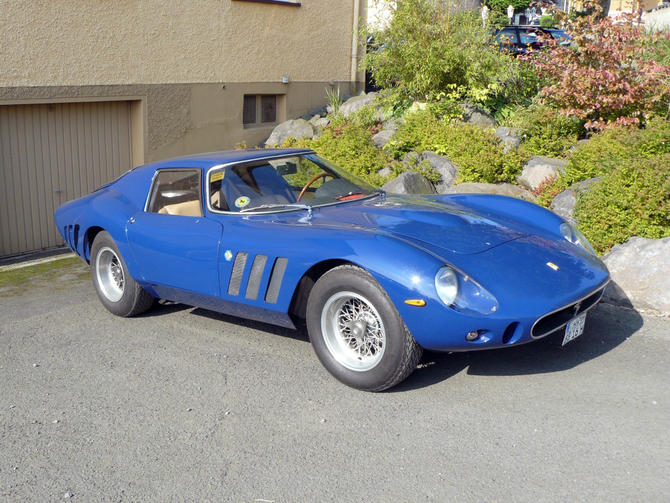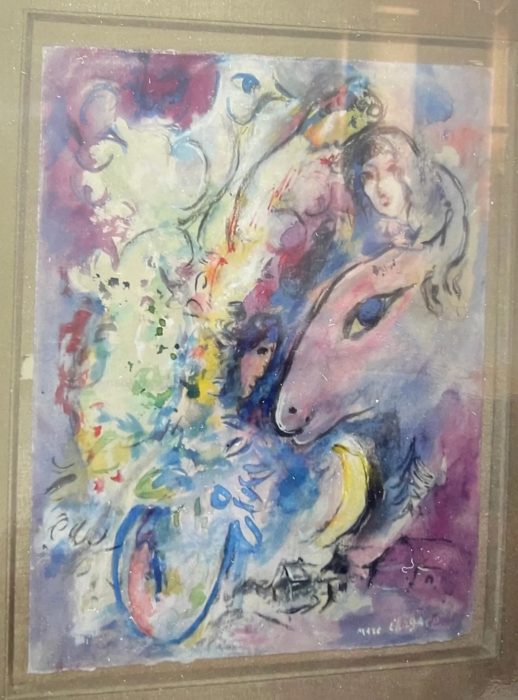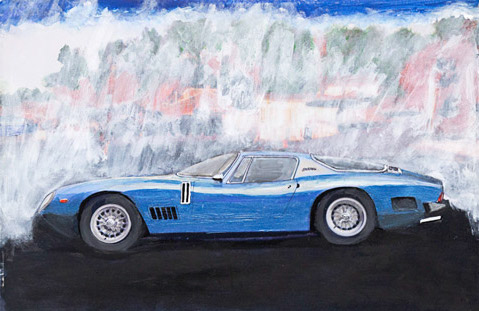by Mike Gulett –
I have written before about how the collector car world is taking on some of the characteristics of the art collector world.
A new feature of the art collector world that I hope we do not see with collector cars is the ability of expert panels to destroy an art piece that they deem to be a fake.
This happened recently with an innocent art collector who paid $90,000 for a painting by Marc Chagall at a Sotheby’s auction in 1994. In 2020 the collector wanted to sell this Chagall art and she discussed the possible sale with Sotheby’s. The auction house said it needed to be authenticated by a Chagall expert panel.
The work was shipped to the Comité Marc Chagall, a panel of experts in Paris, which makes decisions on the authenticity of Chagall art. This panel declared this Chagall to be fake, held onto it and now wants to destroy it.
In France, courts have recognized the authority of expert panels to destroy art works determined to be counterfeit.
Wait—what!?? A third party panel can destroy this person’s property without their permission or compensation? Even if it is fake this seem extreme.
Imagine if this happened in the collector car world. The Shelby American Automobile Club (SAAC) could destroy all fake Shelby Mustangs they found! I am sure they find a lot after all it is not difficult to make a replica Shelby Mustang that looks and runs like an original and except for the chassis number details it could pass for the real thing. But to destroy it seems unnecessary to me. Maybe a permanent brand on the title and publication in the SAAC publications would help save a future victim from thinking they were getting the real deal.
But I’ll bet Ferrari would love to have the ability to legally keep fake Ferraris from diluting their brand by destroying them. It may not be easy to create a fake Ferrari but a Ferrari chassis and Ferrari engine can be morphed into a much more valuable car with a provenance that transfers value to the unscrupulous seller from the unsuspecting buyer.
Remember a fake car does not need to be created from scratch it only needs to have a valuable provenance and history transferred to a lesser car. What if Ferrari had the ability that this Chagall art panel does?
Ferrari Classiche is the Certificate of Authenticity, only available in Maranello, Italy. Customers ship their valuable Ferrari to Maranello for certification but what would happen if Ferrari decided that one was a fake? The “fake” Ferrari is now in Italy in the possession of Ferrari, could they have the same ability as the Chagall panel?
I don’t mean to pick on Ferrari, although they are an easy target – but it is something to think about.
Let us know what you think in the Comments.





For me always strange to notice that when someone comes from the Far-East back in Europe and the the customs see a fake Rolex one bought for $20, or a pair of fake Nike shoes the goods are seized. On the other hand a fake Bizzarrini bought for $ 1.000.000 can cross any border ,,,,
I know that in the US, if I were to copy a Picasso, and I am using Picasso as an example only, and then try to sell it, even if I announced it was a copy, I would be in jeopardy for being sued by the current copyright holder of that work. If I lost the suit in court, and I would, the painting could be seized and destroyed. So if someone holds current and updated copyright to a creative work, they are able to defend that copyright in US courts. I don’t know how this translates to an automobile design, but I would think the same criteria would apply. I have also wondered why automobile manufacturers allow copies of their designs to be made and sold, unless they give permission. Maybe they give permission in some cases and license the copies in exchange for some consideration.
I like the idea of marking the title in the same way Salvage cars are marked. Seems like that woud solve the problem.
Two observations:
It would seem Sotheby’s may have a problem. They sold the art to the collector hopefully with confidence in, and no concerns about, its authenticity. But 26 years later they insist on it being certified as authentic and it’s deemed a fraud. I wonder what country’s laws apply in this case.
As for Shelby’s, the SAAC experts look at more than just the numbers themselves as there are other, more subtle, details that allow them to certify originality. Not sure anyone but the police or a DMV have the authority to order the destruction of a car deemed a fake though.
I’ll be sending a story on a fake Ferrari that an Austrian bought.
The only trouble was that Ferrari had an identical car with identical number at their factory.
So what do you do in a case like that, ask Ferrari which one is the right one when they stand
to lose big time if there’s is the fake?
Stay tuned, sending the story soon
By the way in the art world the Andy Warhol family used to sit in judgement on which
Warhol prints were real but in several cases they mis-judged (saying one was real when they had rejected it earlier) so they stopped doing it.
From the New York Times story:
“Several authentication committees have been sued after ruling that a work was not genuine and panels that officially reviewed the works by Jean-Michel Basquiat, Andy Warhol and Jackson Pollock have disbanded.”
Many will remember the Ferrari GTO replicas built by Fabre in Switzerland. When I remember well most had to be destroyed ….
The difference with cars (and any numbered vehicles) is that you can only call it “fake” if the IDENTITY of the car has been made to resemble an original, factory car, paperwork and all. So mainly not by looks but by serial numbers/VIN and drive train components which are falsely being claimed as factory issued. That is intentional fraud for financial gains. Destroying those goes in my eyes too far because the object still holds a substantial value and will be marked for life. Remember the “prototype” (001) Iso Grifo showing up in Germany with a Fidia chassis number? .
But if someone builds a clone, continuation car, replica (however you want to name them) it is my opinion that this can legally done as much as one wants. These are not made to deceive anyone so all is fine, leave them alone.
So when someone copies an important painting and hangs it on his wall all is good, as soon as he publicizes it as the real deal is can be destroyed? I don’t think I have a problem with that, that constitutes fraud in my eyes.
Just to complicate things more, automakers themselves fake things when they see a reason such as’-When Ford won LeMans they didn’t have the winning Mk.IV on hand so they painted another Mk.IV the winning car’s color nd sent it to a dining joint down the street from the GM building to taunt GM who had a no-racing policy.
–When Detomaso first built the Mangusta prototype it didn’t run, but decades later they put it on a running chassis so to me it’s not the original show car
–When Ferrari saw that the price of the LeMans winning Ferrari was too expensive to buy back, they told the students at their trade school to build a replica
–Jaguar had a plant fire when building D-types so couldn’t make as many as they wanted. So decades later they resume production